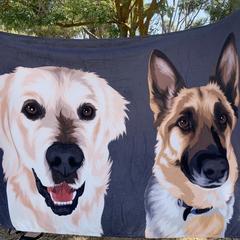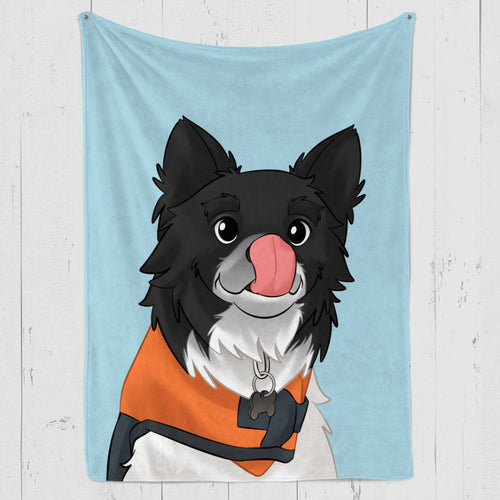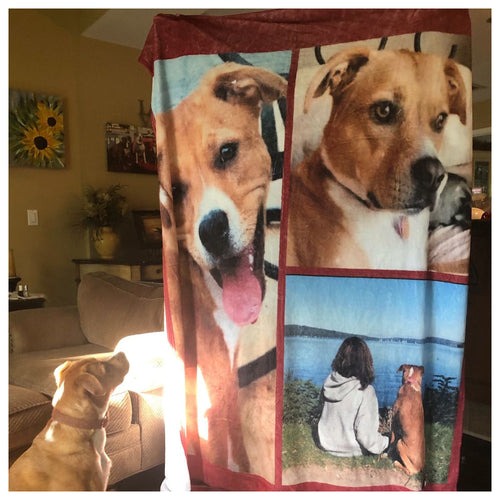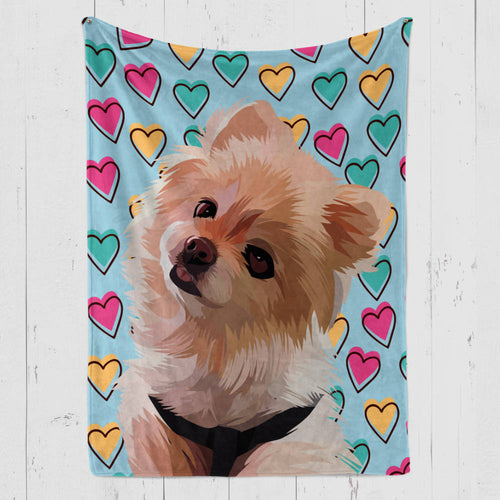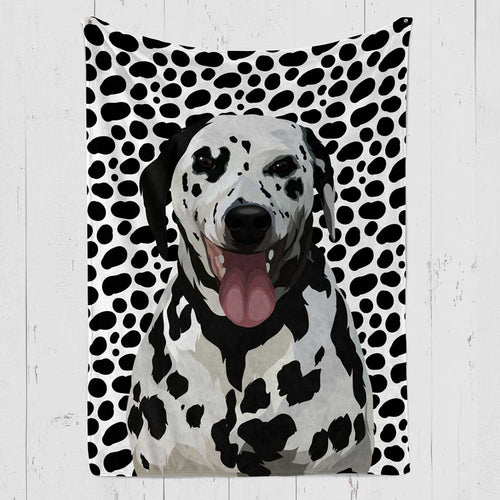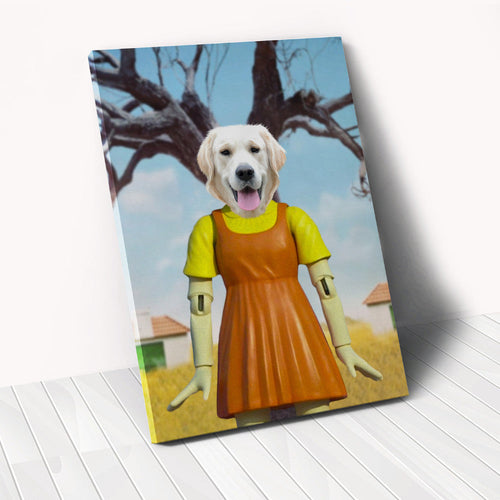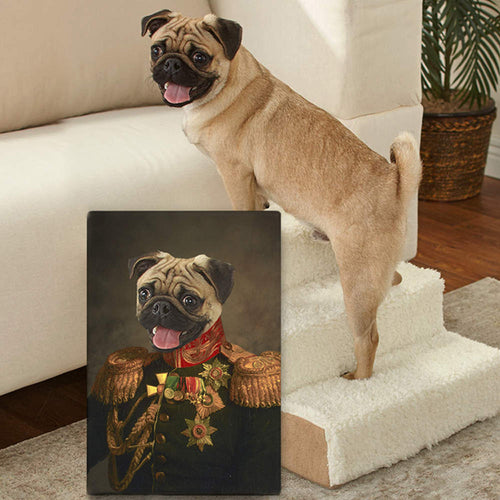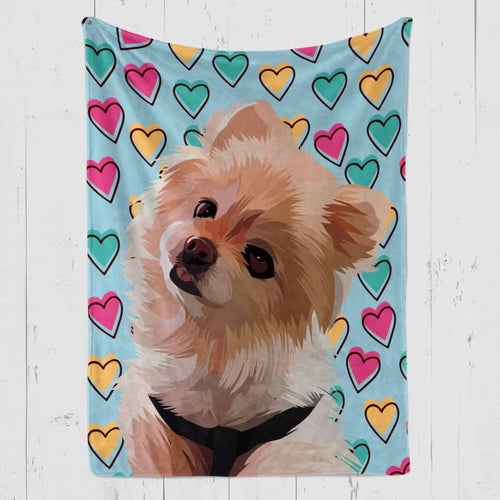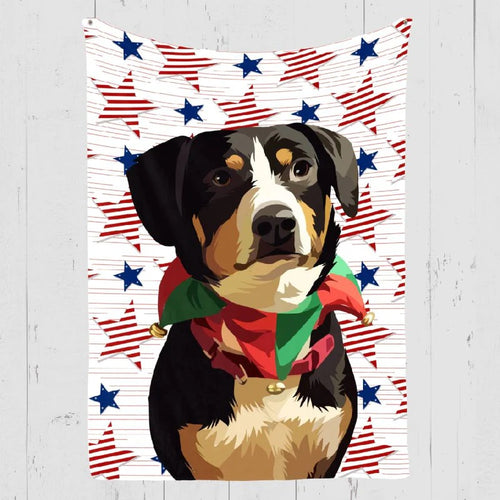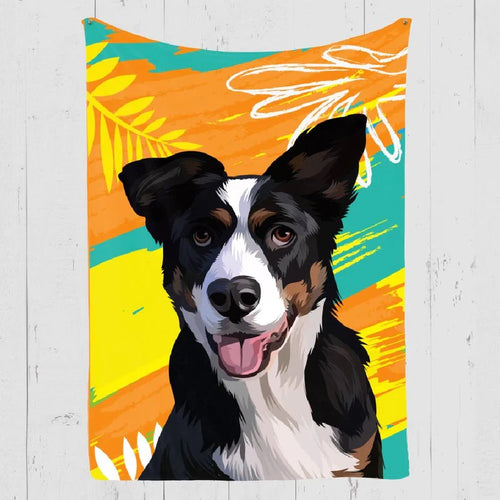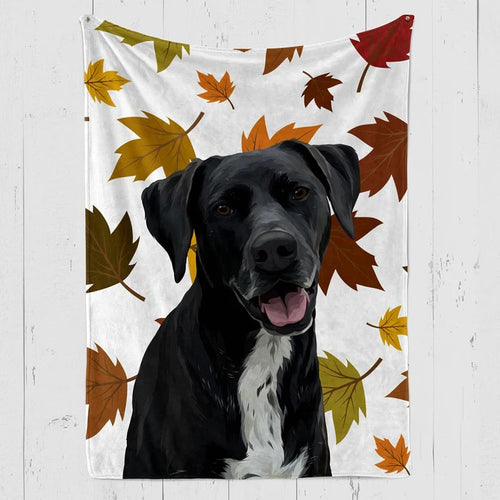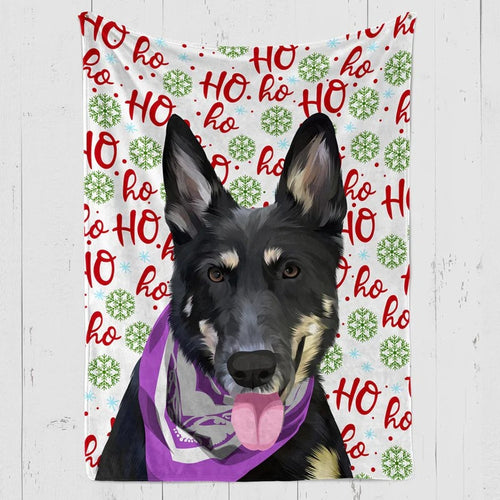
Dogs aren't meant to be kept at home forever, therefore they need to be taught how to walk and behave in public. They might get excited when left outdoors and it gets very difficult to match their pace.
Leash training is a skill that a pet parent needs to master over time. Therefore if you are a beginner and struggling with your dog, don’t worry, it will get better with time. Everyone has their first time. The following part discusses how to leash train your dog in some very simple steps.
How to Leash Train a Dog?
The following sections talk about some of the effective ways to leash train your dog.
1. Training Your Dog To Walk On a Loose Leash

Knowing how to walk on a loose leash is a very important skill that every dog must learn. This will help you to manage and take your dog to several public places. Training a dog takes a lot of time and patience, hence for beginners, it is very important to teach your dog to walk on a loose leash.
Things you will need:
- Harness or collar
- A 4-6 foot long leash
- Rewards or Treats
- Take a lot of treats.
- Decide which side is better for your dog to walk and fill that side of your pocket with treats.
- Grab the leash in the opposite hand.
- Take one step and then stop. If your dog doesn’t comply, it's okay. Just treat your dog to make him stay in position.
- Repeat this process.
- When your dog seeks a treat, take two steps before feeding the dog.
- If your dog moves ahead, stop walking and call your dog back. Use your hand to call your dog for treats and lure them. Don’t feed them yet. Take a few steps ahead before feeding your dog. This will teach your dog that walking alongside on a loose leash makes rewards happen.
- Gradually increase the number of steps between treats and talk to your dog to grab their attention.
2. Ways You Might Be Ruining Your Dog’s Walk

Sometimes we might ruin our dog’s walk even without realizing it. Sometimes we can make their walking experience less enjoyable or dangerous by some of our daily actions. Here are some ways that might be responsible for ruining your dog’s walk:
Not Paying Enough Attention to Your Dog’s Body Language:
The only way your dog communicates with you is by its body language. So, if we are not paying proper attention to our furry friends we might miss the cues that they are trying to give us. When your dog walks slowly or lags behind you, it might mean that your fluffball is very tired and needs a break before moving further.
Or, if you find your dog sniffing the ground aggressively, it might mean that they sense something dangerous. Observing your dog closely will make the walk more enjoyable and safe for both of you.
Taking the Same Route for Walk Everyday:
Just like us dogs get bored as well. So, it’s very important for you to introduce something new to spice up the walks. If you take the same route every day, they will not be excited as they’ll know what to expect.
However, taking your dog through different routes keeps them excited for their walk and gives them a new experience altogether.
Not Allowing Your Dog to Take Breaks Between Walks:
Dogs love to explore whatever is present around them and they do that by smelling around while walking. Smelling their environment helps them to learn about nature and other inhabiting creatures.
So, if you are not letting your dog smell around and explore you are hampering their learning experience and hence they will not enjoy their walk. They even take breaks in between walks to pee. So, if you miss that cue, your dog might be left irritated.
Not Taking Note of the Weather:
Just like humans, the weather has a great impact on dogs. Very hot weather can cause heat stroke while very cold weather can be responsible for frostbite. Therefore, if you have planned to go out with your fur baby, check the weather beforehand and dress your dog up according to it.
However, if the weather tends to be bad, you should let go of the idea of going out and enjoying some indoor activities with your dog.
Not Letting Your Dog Socialize:
Dogs are very social animals who love meeting new people and dogs. If you are taking your dog for a walk to a much-isolated place, they will not get the chance to socialize and interact with other dogs and humans.
Therefore try to take your dog to such places where they would get the chance with other dogs and play around with them.
3. Teach Your Dog To Walk Without Pulling

The steps below will explain how you can leash train your dog politely without pulling on them:
-
- Attach your dog to a long leash (minimum 10 to 20 feet) along with a standard harness. Also, take some pea-sized meat and cheese in a box and take your pup to your backyard or to a familiar place.
- Then, start walking with your dog and when you notice your dog walking beside you, reward them with treats. Treat them every time they walk beside you initially and as they get better gradually decrease the rewards.
- Practice this until your dog gets better at leash training.
- Now, the next thing you can do is wait for a time when your dog leaves your side. When that moment comes, call your dog in an upbeat voice and do something for him to notice you. After that, turn away from your dog and start walking.
- As soon as he joins you, reward him with treats and praise him for his action. Continue treating him as long as he walks by you.
- Continue to practice this until your dog gets a hold of this.
- Practice these two techniques in your backyard or a familiar place and once your dog has been trained a bit try taking him to other places to adapt himself to various places.
Conclusion
Dog training is a key aspect that helps you to bond with your pup along with teaching them certain things. This also helps to keep them safe out and about. If you notice any kind of unusual behavior, you should consult your vet as soon as possible. Also, if you are not able to train your dog in the correct way, you might also go for a professional trainer who will help you to train your dog.
Frequently Asked Questions:
At what age should I commence leash training for my puppy?
Puppy leash training can commence at approximately 7 to 8 weeks of age. However, given their limited attention span, it is crucial to approach this process with a considerable amount of patience.
What are some prevalent errors to steer clear of during leash training?
Several common mistakes to avoid during leash training include:
-Covering extensive distances during training sessions.
- Maintaining a pace that is excessively fast for the dog to keep up with.
How should I manage a dog displaying aggression during walks?
If your dog exhibits aggressive behavior during walks, it's advisable to maintain a firm yet composed demeanor. Swiftly walks away from the triggering situation without resorting to punitive measures or leash corrections.
What is the recommended duration and frequency for walking my dog?
For an average dog, a daily walk lasting between 15 to 20 minutes is generally sufficient. However, some dogs may require multiple walks throughout the day to meet their exercise and mental stimulation needs.
How can I facilitate socialization for my dog during walks?
To encourage socialization during walks, aim to establish positive associations between your dog and the various stimuli encountered during outings. This approach effectively helps alleviate fear and anxiety in your canine companion.
Reference Links:
Latest Review on Woof Blankets
To have such a masterpiece by my side every day is a gift for me and my memories with Rex. Thank you WoofBlankets for such an opportunity to recreate his image on a blanket.Lara o’ Miguel US, California

COLLECTION WORTH EVERY PENNY
BEST SELLERS
-
Woofy Single Color Custom Pet Blanket
![Woofy Single Custom Pet Blanket – Woof Blanket]()
- -41%
BlanketsSHOP NOW- Regular price
- from $64.95
- Sale price
- from $64.95
- Regular price
-
$109.95 - Unit price
- per
Sold out -
Exclusive Christmas Custom Pet Blanket
![Exclusive Custom Pet Blanket]()
- -39%
BlanketsSHOP NOW- Regular price
- from $69.95
- Sale price
- from $69.95
- Regular price
-
$114.95 - Unit price
- per
Sold out -
Christmas Custom Pet Blanket
![Christmas Custom Pet Blanket - Custom Dog Blankets]()
- -40%
BlanketsSHOP NOW- Regular price
- from $69.95
- Sale price
- from $69.95
- Regular price
-
$115.95 - Unit price
- per
Sold out -
Watercolor Pet Portraits
![]() SHOP NOW
SHOP NOW- Regular price
- from $59.95
- Sale price
- from $59.95
- Regular price
-
- Unit price
- per
Sold out -
Woofy Christmas Custom Dog Blanket
![Woofy Christmas Custom Dog Blanket]()
- -39%
BlanketsSHOP NOW- Regular price
- from $69.95
- Sale price
- from $69.95
- Regular price
-
$114.95 - Unit price
- per
Sold out -
Modern Pet Owner Portrait
![]()
- -32%
CanvasSHOP NOW- Regular price
- from $84.95
- Sale price
- from $84.95
- Regular price
-
$124.95 - Unit price
- per
Sold out -
Woof Splash Custom Pet Blanket
![Woof Splash Custom Pet Blanket]()
- -39%
BlanketsSHOP NOW- Regular price
- from $69.95
- Sale price
- from $69.95
- Regular price
-
$114.95 - Unit price
- per
Sold out -
The Admiral - Custom Pet Portrait
![The Admiral - Custom Pet Portrait Online]()
- NEW
- -25%
CanvasSHOP NOW- Regular price
- from $59.95
- Sale price
- from $59.95
- Regular price
-
$79.95 - Unit price
- per
Sold out -
Wings of Loyalty - Custom Pet Portrait
![]()
- NEW
CanvasSHOP NOW- Regular price
- from $59.95
- Sale price
- from $59.95
- Regular price
-
- Unit price
- per
Sold out -
Pet Memorial Custom Photo Collage Blanket
![Personalized pet memorial quilt with photos]()
- -41%
BlanketsSHOP NOW- Regular price
- from $64.95
- Sale price
- from $64.95
- Regular price
-
$109.95 - Unit price
- per
Sold out -
Celestial Paws - Custom Pet Portrait
![]() CanvasSHOP NOW
CanvasSHOP NOW- Regular price
- from $59.95
- Sale price
- from $59.95
- Regular price
-
- Unit price
- per
Sold out -
The Loyal Soul - Custom Pet Portrait
![]()
- NEW
SHOP NOW- Regular price
- from $59.95
- Sale price
- from $59.95
- Regular price
-
- Unit price
- per
Sold out -
Cartoonized Pet Portraits (New)
![Cartoonized Pet Custom Portraits Online]()
- -36%
SHOP NOW- Regular price
- from $59.95
- Sale price
- from $59.95
- Regular price
-
$93.95 - Unit price
- per
Sold out -
The French Sailor - Custom Pet Portrait
![]()
- -25%
CanvasSHOP NOW- Regular price
- from $59.95
- Sale price
- from $59.95
- Regular price
-
$79.95 - Unit price
- per
Sold out -
The Policeman - Custom Pet Portrait
![]()
- NEW
- -25%
CanvasSHOP NOW- Regular price
- from $59.95
- Sale price
- from $59.95
- Regular price
-
$79.95 - Unit price
- per
Sold out -
The General - Custom Pet Portrait
![]()
- NEW
- -25%
CanvasSHOP NOW- Regular price
- from $59.95
- Sale price
- from $59.95
- Regular price
-
$79.95 - Unit price
- per
Sold out -
Woof Love Custom Pet Blanket
![Woof Love Custom Pet Blanket]()
- -39%
BlanketsSHOP NOW- Regular price
- from $69.95
- Sale price
- from $69.95
- Regular price
-
$114.95 - Unit price
- per
Sold out -
Summer Time Custom Pet Blanket
![Summer Time Custom Pet Blanket]()
- -39%
BlanketsSHOP NOW- Regular price
- from $69.95
- Sale price
- from $69.95
- Regular price
-
$114.95 - Unit price
- per
Sold out -
The Ambassador - Custom Pet Portrait
![The Ambassador - Custom Pet Portrait Online]()
- NEW
- -25%
CanvasSHOP NOW- Regular price
- from $59.95
- Sale price
- from $59.95
- Regular price
-
$79.95 - Unit price
- per
Sold out -
Fall In Love Custom Pet Blanket
![Fall In Love Custom Dog Blanket]()
- NEW
- -39%
BlanketsSHOP NOW- Regular price
- from $69.95
- Sale price
- from $69.95
- Regular price
-
$114.95 - Unit price
- per
Sold out -
The Classy Lady - Custom Pet Portrait
![The Classy Lady]()
- NEW
- -25%
CanvasSHOP NOW- Regular price
- from $59.95
- Sale price
- from $59.95
- Regular price
-
$79.95 - Unit price
- per
Sold out -
The Duke - Custom Pet Portrait
![The Duke - Custom Pet Portrait]()
- NEW
- -25%
CanvasSHOP NOW- Regular price
- from $59.95
- Sale price
- from $59.95
- Regular price
-
$79.95 - Unit price
- per
Sold out -
Dog In Suit- Custom Pet Portrait
![Dash Dog In Suit- Custom Pet Portrait Online]()
- NEW
- -25%
CanvasSHOP NOW- Regular price
- from $59.95
- Sale price
- from $59.95
- Regular price
-
$79.95 - Unit price
- per
Sold out -
The Princess - Custom Pet Portrait
![]()
- NEW
- -25%
CanvasSHOP NOW- Regular price
- from $59.95
- Sale price
- from $59.95
- Regular price
-
$79.95 - Unit price
- per
Sold out -
Modern Pet Portrait with One Mug
![Modern Pet Portrait with One Mug]()
- -25%
Print MaterialSHOP NOW- Regular price
- from $99.95
- Sale price
- from $99.95
- Regular price
-
$133.95 - Unit price
- per
Sold out -
The Aristocrat - Custom Pet Portrait
![The Aristocrat - Custom Pet Portrait At Best Price]()
- NEW
- -25%
CanvasSHOP NOW- Regular price
- from $59.95
- Sale price
- from $59.95
- Regular price
-
$79.95 - Unit price
- per
Sold out -
Single Color Custom Blanket with 1 Mug
![Single Color Custom Blanket with 1 Mug]() BlanketsSHOP NOW
BlanketsSHOP NOW- Regular price
- from $99.95
- Sale price
- from $99.95
- Regular price
-
- Unit price
- per
Sold out -
Single Color Custom Blanket with 2 Pillows
![Single Color Custom Pet Blanket with 2 Pillows]()
- -21%
BlanketsSHOP NOW- Regular price
- from $99.95
- Sale price
- from $99.95
- Regular price
-
$125.95 - Unit price
- per
Sold out -
The Dog in Suit Custom Pet Mug
![]()
- -20%
MugsSHOP NOW- Regular price
- $39.95
- Sale price
- $39.95
- Regular price
-
$49.95 - Unit price
- per
Sold out -
Angel Custom Pet Mug
![]()
- -20%
MugsSHOP NOW- Regular price
- $39.95
- Sale price
- $39.95
- Regular price
-
$49.95 - Unit price
- per
Sold out -
This Human Belongs To - Custom Pet Mug
![]()
- NEW
- -20%
MugsSHOP NOW- Regular price
- $39.95
- Sale price
- $39.95
- Regular price
-
$49.95 - Unit price
- per
Sold out -
It's Not Dog Hair Custom Pet Mug
![]()
- NEW
- -20%
MugsSHOP NOW- Regular price
- $39.95
- Sale price
- $39.95
- Regular price
-
$49.95 - Unit price
- per
Sold out -
My Dog Is My Valentine Custom Pet Mug
![]()
- NEW
- -20%
MugsSHOP NOW- Regular price
- $39.95
- Sale price
- $39.95
- Regular price
-
$49.95 - Unit price
- per
Sold out -
3 Photos With Message Custom Pet Mug
![]()
- NEW
- -20%
MugsSHOP NOW- Regular price
- $39.95
- Sale price
- $39.95
- Regular price
-
$49.95 - Unit price
- per
Sold out -
My Valentine Has Four Legs- Personalized Mugs
![]()
- NEW
- -20%
MugsSHOP NOW- Regular price
- $39.95
- Sale price
- $39.95
- Regular price
-
$49.95 - Unit price
- per
Sold out -
Dog Mamma Custom Pet Coffee Mug
![]()
- -20%
MugsSHOP NOW- Regular price
- $39.95
- Sale price
- $39.95
- Regular price
-
$49.95 - Unit price
- per
Sold out -
Uncle Sam - Custom Pet Portrait
![]()
- NEW
- -25%
CanvasSHOP NOW- Regular price
- from $59.95
- Sale price
- from $59.95
- Regular price
-
$79.95 - Unit price
- per
Sold out -
The Revolutionary Emperor - Custom Pet Portrait
![]()
- NEW
- -25%
CanvasSHOP NOW- Regular price
- from $59.95
- Sale price
- from $59.95
- Regular price
-
$79.95 - Unit price
- per
Sold out -
The Princess Paws - Custom Pet Portrait
![]()
- -25%
CanvasSHOP NOW- Regular price
- from $59.95
- Sale price
- from $59.95
- Regular price
-
$79.95 - Unit price
- per
Sold out -
The Dark Crusader Knight - Custom Pet Portrait
![]()
- -25%
CanvasSHOP NOW- Regular price
- from $59.95
- Sale price
- from $59.95
- Regular price
-
$79.95 - Unit price
- per
Sold out

